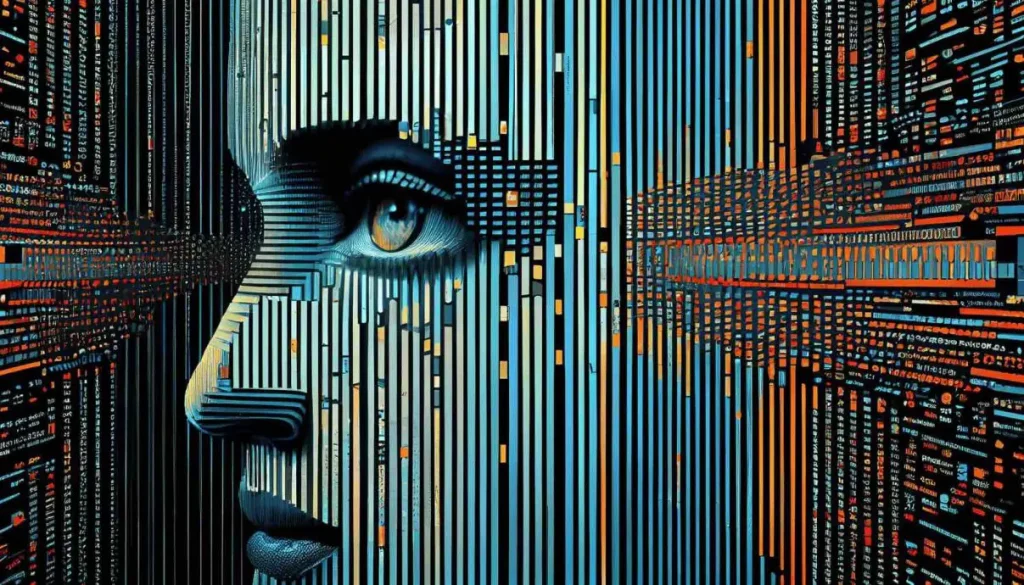Redefining Writing: Integrating Digital Technologies in the Creative Process

Transforming Writing Practices in the Digital Age
In an era where the boundaries of creation are constantly evolving, writing has assumed a new dimension. The integration of digital technologies is transforming traditional writing practices, leading to innovative frameworks for expression and communication. For today’s writers, the challenges and opportunities presented by digital tools facilitate an unprecedented level of interaction and creativity.
With tools and platforms readily available, writers today experience a shift characterized by:
- Collaborative writing via cloud-based applications, such as Google Docs and Microsoft OneDrive, allows multiple authors to contribute simultaneously, enhancing productivity and fostering a sense of teamwork. This is especially beneficial for projects needing diverse perspectives, such as academic papers or creative works like screenplays.
- Utilization of AI-driven tools for brainstorming and editing, including applications like Grammarly and Jasper.ai, which support writers in refining their ideas and improving their writing quality. By harnessing algorithms, these tools offer real-time suggestions that can save time and inspire new ways of thinking about topics.
- Interactive storytelling through multimedia platforms gives writers the chance to craft immersive narratives that blend text, audio, and visual elements. For example, platforms like StoryMapJS enable users to create geographic narratives that combine rich media with storytelling, making the experience engaging and informative.
This digital revolution not only enhances productivity but also invites a diverse audience into the creative process. For instance, platforms like Medium and Wattpad allow writers to share their narratives and receive real-time feedback, fostering a community of creators and readers. This dynamic interaction can lead to mentorship opportunities, constructive criticism, and even collaborative projects among authors who may never have crossed paths otherwise.
The integration of technologies is particularly relevant in the United States, where a significant number of millennials and Gen Z individuals seek creative outlets through digital means. These generations are not only consumers of content but also active participants in shaping it, as platforms encourage user-generated contributions. Reports show that nearly 50% of young adults engage with writing in some capacity online, whether through blogs, social media, or participation in writing challenges such as NaNoWriMo (National Novel Writing Month).
As these technologies continue to blend into the fabric of writing, the potential for new artistic expressions awaits discovery. The ability to reach broader audiences, experiment with various media, and collaborate seamlessly is redefining what it means to be a writer today. As we delve deeper into this exploration, let’s uncover how these innovations are not just redefining writing, but also reshaping the very essence of creativity itself.

Discover more: Click here to learn about sustainable knitting
The New Landscape of Writing Tools
The advent of digital technologies has revolutionized writing, creating an expansive landscape of tools that not only assist writers in the creative process but also reshape the very essence of how narratives are constructed and shared. Writers today have access to a myriad of applications and technologies that facilitate every stage of their craft, from idea generation to publication. Understanding these tools and their implications is crucial for writers who wish to thrive in this digital age.
One of the most profound shifts in writing practices has been the emergence of cloud-based collaboration tools. Platforms like Google Docs and Microsoft OneDrive have transformed the writing process, enabling a level of collaboration that was previously difficult to achieve. In traditional settings, authors might exchange documents via email, leading to confusion over versions and edits. However, cloud-based tools allow for real-time collaborative writing, where authors can see changes as they occur and communicate directly within the document. This immediacy not only enhances productivity but also enriches the writing itself; writers can draw on immediate feedback and insights from peers, resulting in more diverse and well-rounded narratives.
Furthermore, the rise of artificial intelligence in writing has introduced a new comparison between traditional writing methods and contemporary practices. Writers are increasingly utilizing AI-driven tools like Grammarly, Hemingway App, and Jasper.ai to assist in drafting, editing, and even brainstorming content. Moreover, these applications offer suggestions based on vast datasets, often presenting alternatives that a writer may not have initially considered. For instance, a simple grammar check can evolve into a conversation about tone, style, and structure, enabling writers to elevate their work to professional standards without the necessity of a dedicated editor.
An emerging trend within this digital ecosystem is the incorporation of multimedia elements into writing. With tools that allow for seamless integration of video, audio, and interactive components, the possibilities for storytelling have expanded significantly. Writers can now construct narratives that are not only text-based but enriched with visual and auditory elements, creating immersive experiences for their audience. For example, using platforms like Canva and Adobe Spark, writers can complement their articles or stories with infographics, short video clips, and podcasts to enhance understanding and engagement.
However, the shift towards integration with digital technologies is not without challenges. Writers often grapple with the overwhelming number of available tools, and navigating these options can be daunting. Identifying which tools are right for their unique creative process can require significant exploration and adaptation. Below are some essential considerations for writers aiming to unlock the full potential of digital tools:
- Evaluate your needs: Understand what aspects of the writing process you wish to enhance—be it collaboration, organization, or creativity.
- Embrace experimentation: Explore different tools and platforms to discover what aligns best with your workflow.
- Stay updated: Follow industry trends, as digital technologies continue to evolve, presenting new opportunities and tools regularly.
The integration of digital technologies has undeniably redefined writing practices. By embracing the innovations available today, writers can foster creativity, enhance collaboration, and engage with their audiences in ways that were once unimaginable. As we examine further, it becomes clear that the future of writing, shaped by these advancements, opens new horizons for creative expression.
| Category | Key Features |
|---|---|
| Enhanced Collaboration | Digital tools allow writers to work simultaneously, fostering creativity and shared ideas in real-time. |
| Access to Resources | Integration of platforms provides writers with endless resources for research and inspiration, breaking the confines of traditional libraries. |
Within the realm of creative writing, integrating digital technologies is reshaping the writing process in unprecedented ways. Enhanced collaboration is one key factor; writers can now come together from any location, sharing ideas and working on manuscripts in real-time. This collaborative spirit transforms how narratives are developed, blending diverse interpretations and styles.Moreover, in this digital age, access to resources is incredibly vast. Writers have the ability to tap into multiple databases, online workshops, and forums that encourage peer feedback and critique. This accessibility not only inspires creativity but also streamlines the research process, enabling writers to enrich their stories with factual depth. As digital technologies continue to evolve, they enable writers to explore innovative formats and platforms, such as interactive storytelling and multimedia projects, allowing for a truly multifaceted creative expression. Embracing these advances encourages writers to break the mold of traditional storytelling, inviting readers into immersive experiences that weave together various digital elements.
DISCOVER MORE: Click here to find out how knitting can ease your stress
Enhancing Creativity and Accessibility Through Digital Innovation
As the digital landscape continues to evolve, one cannot overlook the profound impact of writing apps and software designed specifically to foster creativity. Tools such as Scrivener and Ulysses provide writers with multifunctional platforms that streamline the writing process from inception to publication. These apps offer features that mimic the traditional writing environment while adding layers of sophistication. For example, writers can create character sketches, outline plots, and manage multiple drafts all in one place, thereby reducing the friction typically associated with transitioning between various writing stages.
Moreover, the rise of podcasting and vlogging has opened additional avenues for writers to express their creativity. These platforms allow for a shift from purely textual narratives to engaging auditory and visual storytelling. For instance, authors can narrate their stories or discuss their writing processes, thereby reaching audiences who may prefer these formats over traditional reading. This not only broadens the potential audience but also allows writers to build personal connections with their listeners, facilitating a deeper understanding of the creative process and the narratives being developed.
In addition, the democratization of self-publishing through platforms like Amazon Kindle Direct Publishing and Smashwords has revolutionized accessibility in the writing world. Aspiring writers can now publish their works without the barriers that traditional publishing often poses. This shift not only empowers individuals with diverse voices to share their stories but also enriches the literary landscape with a broad array of genres and styles. According to a study by the Pew Research Center, the self-publishing market has seen a dramatic increase, with over 1.7 million titles published in 2019 alone. This statistic highlights the surge in personal narratives and niche topics previously overlooked by major publishing houses.
Furthermore, the role of social media in writing has fundamentally changed how writers connect and build their brands. Platforms like Twitter, Instagram, and Facebook serve as vital venues for authors to share snippets of their work, engage with readers, and build communities. The use of hashtags, writing prompts, and online challenges can spark creativity and foster collaboration among creators, generating excitement and discussions around their work. Engaging directly with an audience before a piece is even published can lead to valuable insights, which may ultimately shape the final narrative.
While the integration of these digital technologies has enabled unparalleled creative expression and accessibility, it is important for writers to maintain a balance between innovation and the authenticity of their voice. As engaging as these tools can be, writers must ensure that their work remains a reflection of their individual style and intention. Challenging oneself to utilize digital tools without losing one’s unique perspective is an ongoing journey, and this challenge ultimately leads to growth and evolution as a writer.
In summary, the transformative landscape of writing brought about by digital technologies provides writers with novel ways to enhance their creativity and reach broader audiences. With the right tools and a discerning approach, writers can navigate this dynamic environment effectively, creating impactful narratives that resonate in an ever-expanding sphere of creativity.
DISCOVER MORE: Click here to delve into sustainable art
Conclusion: Embracing the Future of Writing
In a world where digital technologies constantly reshape our creative landscape, redefining writing has become an essential pursuit for contemporary authors. As explored throughout this article, tools such as writing apps, self-publishing platforms, and social media have not only streamlined the writing process but have also significantly broadened the pathways for creative expression. The integration of these technologies empowers writers to share their unique voices, democratizes access to publishing, and fosters genuine connections with audiences.
The rise of podcasting and vlogging further illustrates this evolution, demonstrating how narratives can transcend traditional formats, engaging diverse audiences. As writers harness these multifaceted platforms, they transform the way stories are told and received, inviting readers to immerse themselves in rich, multimedia experiences. With over 1.7 million titles self-published in just one year, it’s clear that an array of perspectives and genres is rapidly enriching the literary field.
Nevertheless, amidst this technological evolution, the essence of writing remains grounded in authenticity and self-expression. Writers must tread carefully, ensuring that while they embrace digital innovations, they do not compromise their unique voice. Ultimately, the journey toward mastering these tools presents both a challenge and an opportunity for growth, encouraging writers to evolve continuously. As we advance towards an increasingly digital future, the writing process will continue to thrive, engendering a vibrant community where creativity knows no bounds.



